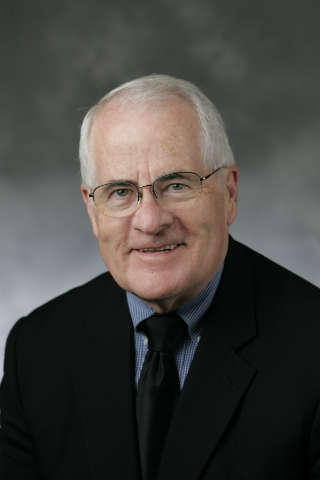Each of us has had a fair share of experience with the Academy: attending meetings, using educational products, serving on committees, contributing to advocacy efforts. But not all of us know its history.

David J. Noonan
We all are familiar with the three incredible leaders (executive vice presidents) we have had: Bruce Spivey, MD; H. Dunbar Hoskins, MD; and David W. Parke II, MD. But we have only had one deputy EVP: David Noonan. He served in this capacity (first for the combined American Academy of Ophthalmology and Otolaryngology) for 37 years. Such experience highly qualifies him to tell a very unique story of our organization’s history.
During AAO 2017, Noonan entertained those attending the Senior Ophthalmologist Committee’s special symposium with his tales, offering stories of challenges and successes with his unique brand of humor. This presentation deserves a wider audience. Thus, we’ll offer it in serial fashion to Scope over three successive installments.
The following is adapted from Noonan’s October 2017 remarks, interspersed with a few of my comments to provide more context.
Part 1 - The Early Years; Growth of the Independent Organization; Evolution of Governance and Outreach
David Noonan: How many of you were members of the Academy when I joined the AAOO in 1972? You have to admit that it is very presumptive of me, a non-physician, a non-ophthalmologist, to be giving a talk on the history of the organization you led for years. I hope that I can add a little color to some of the events you all led or witnessed. It will not be a tell-all story, so some of you can relax.
Susan Day: A bit of serendipity had resulted in David’s working in an Iowa City hospital in which he met Michael Kos, MD, and Bruce Spivey, MD, (one was destined to run the AAOO, the other to serve as the first Academy EVP). Noonan detoured to Utah for further education but was quickly tabbed upon return to Iowa by Dr. Kos, who by then had moved to Rochester, Minn., to lead the AAOO. Soon thereafter, David packed his bags for the move to Rochester. The AAOO staff at that time consisted of Dr. Kos, Noonan and 23 “ladies,” as they were addressed (contrast this to the size of the Academy staff now - nearly 200).
Noonan: The AAOO was led by a council up to 22 members divided by O and O specialties. The president rotated each year between the two specialties. The organization had total assets of $1.6 million. And the membership was just north of 8,000. Today we (the Academy) have a budget in excess of $60 million and a membership over 30,000.
When Dr. Kos inherited the secretary-treasurer job, he created quite a stir by presenting a written agenda backed up with materials for review in advance of the meeting. I was told that under Dr. Benedict’s leadership, the council meeting had one sheet of paper on the table – his!
The council membership consisted largely of representation from academia as benefitted an organization dedicated to education. I quickly learned that any correspondence involving political or socioeconomic issues was to be routed to the offices of the American Association of Ophthalmology or the Council of Otolaryngology. The Academy was all about education.
One of the biggest challenges Dr. Kos faced was the growth spurt of membership attending the meeting. For 26 years the Academy had met in the Palmer House in Chicago. Mike convinced the board and the leadership of both Las Vegas and Dallas to expand their convention centers and add 20 meeting rooms for the Academy’s instruction courses.
Two factors changed the focus and the structure of the AAOO under Mike Kos: the availability of appropriate meeting space, and the acknowledgement that EENT training had evolved into such distant pathways that there was no natural adhesion of the specialties.
While there had been a suggestion in the 1950s that the Academy should split, that was defeated. By 1973, however, a motion for separation was validated by mail ballot of the membership that resulted in a 60/40 vote to separate.
Divorce is never easy. There were strong feelings for and against within both specialties. These tested the character of the leadership. They had to surmount legal hurdles and separate assets. They could have employed legal maneuvers to capture the entire assets. Dr. Kos absolutely refused to go down that path. Though the membership voted 60/40 in favor of division (not ophthalmology), Dr. Straatsma led a move to divide the educational trust fund equally.
The divorce process took the better part of a year and a half. As a child of the divorce, I was given the choice of which parent I should live with. I chose ophthalmology, due to the ascendency of its science and the character of its leadership and the chance to escape Rochester’s 20-below-zero winters for San Francisco.
Besides, if you’ve ever been propositioned by Spivey and Straatsma, with a closer like Ed Norton, you know I really didn’t have an option.